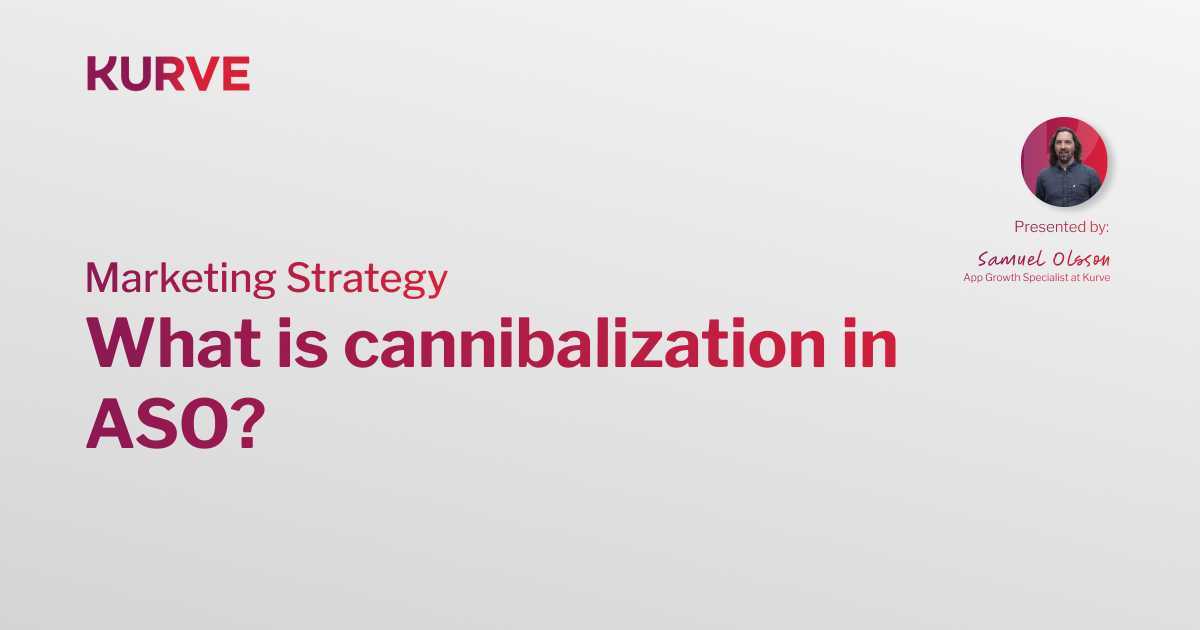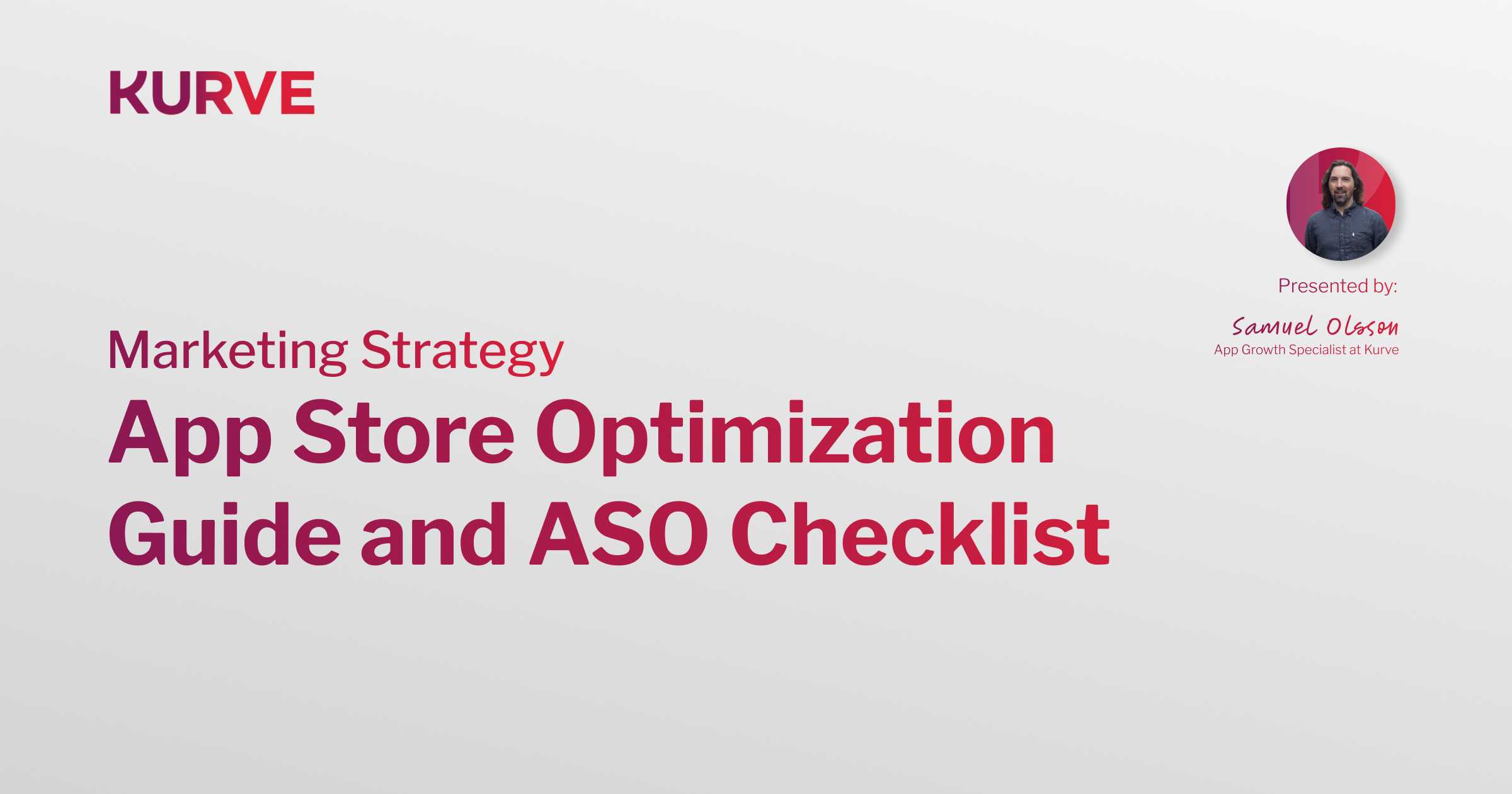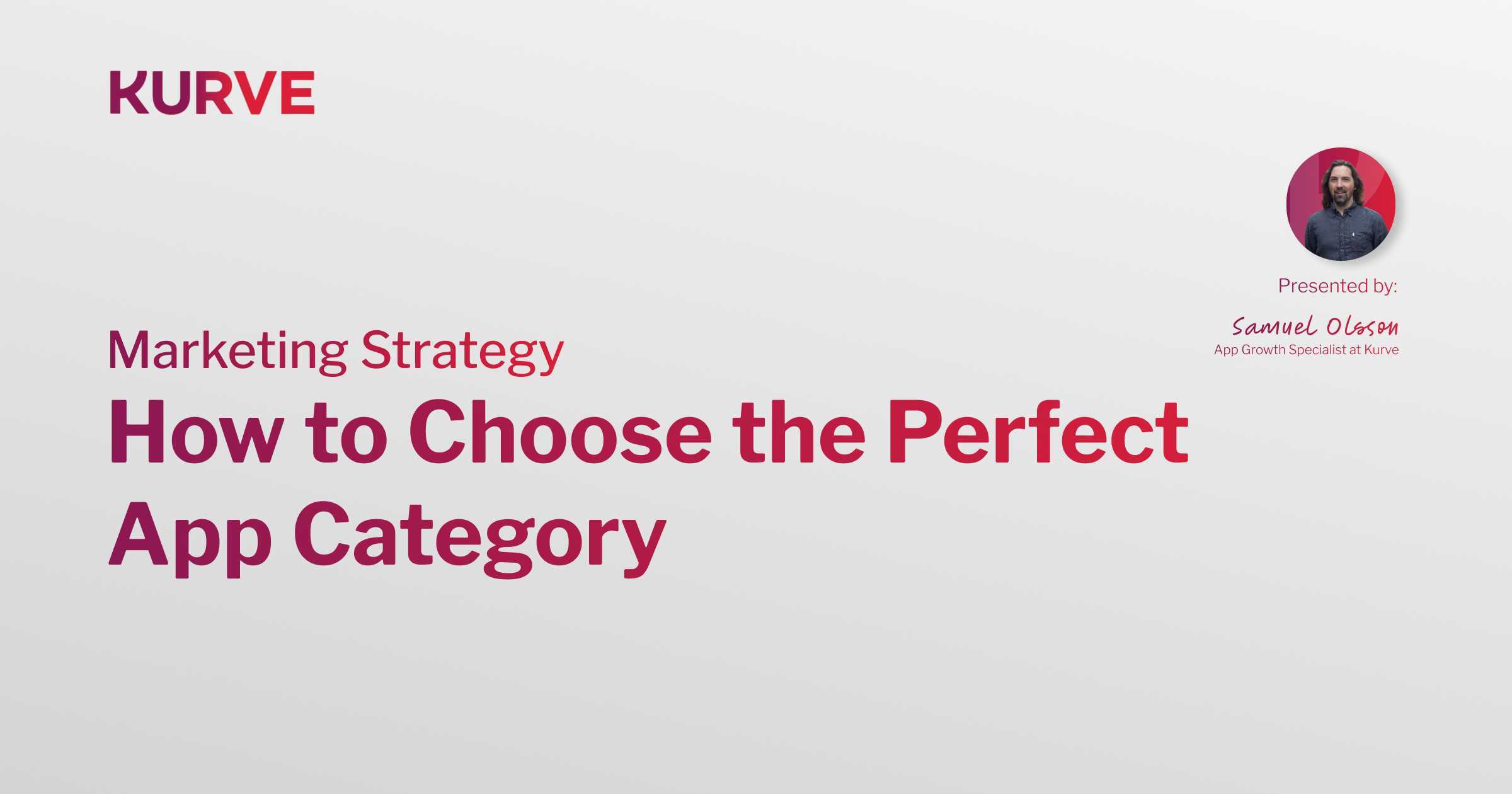How to Increase App Downloads in 2025
With countless apps vying for users' attention, marketing mobile apps in the highly competitive digital landscape of 2025 can be daunting.
Developing a marketing strategy that ensures your app stands out from the crowd takes considerable effort and time. This is why successful companies delegate this to agencies equipped with the proper tools and knowledge to create marketing strategies for mobile apps that deliver results.
At Kurve, we understand the challenges of marketing mobile apps and the importance of a well-thought-out strategy to increase app downloads. With extensive experience in mobile app marketing, we know the latest tools and strategies to help our clients achieve their app marketing goals.
This guide will provide actionable strategies and best practices for getting app downloads. Whether you're a beginner or a seasoned app marketer, we'll equip you with everything you need to develop a successful app marketing plan.
What is Mobile App Marketing?
Mobile app marketing refers to promoting a mobile application to increase its visibility, downloads and user engagement. It involves utilizing various marketing channels and tactics to attract potential users to download the app and convince them to keep using it.
The main goal of mobile app marketing is to ensure that an app stands apart from the competition and reaches a broad audience. It requires a comprehensive strategy that covers various aspects of app marketing, including app store search engine optimization, social media marketing, influencer collaborations, email marketing automation, and many more verticals.
In today's digital age, mobile app marketing has become an essential aspect of the app development process. A well-executed mobile app marketing strategy can help developers and businesses increase their app's visibility, acquire new users, and retain existing ones. By focusing on user engagement and providing value to users, mobile app marketers can create long-term relationships with their app users and achieve long-term success.
Why are Marketing Mobile Apps Important?
Mobile app marketing determines the success of any app in today's competitive market. There are 4,000,000+ apps worldwide. It's becoming increasingly difficult for developers and businesses to reach and engage their target audience. Effective mobile app marketing can help overcome this challenge and drive significant benefits for the app.
At Kurve, we understand the importance of mobile app marketing and have the expertise to help our clients achieve their app marketing goals. We help our clients increase app store visibility and attract potential users by utilizing various marketing channels and tactics.
But it doesn't end there. We also focus on user engagement and retention, helping our clients create long-term relationships with their users. Our success with Sweatcoin, a health & fitness app, is a perfect example. With our expertise, Sweatcoin saw a 25% boost in installs and a 20% improvement in LTV:CAC Ratio.
What are the Stages of Mobile App Marketing?
Companies can effectively plan and execute their marketing strategies to increase app downloads by breaking the marketing process into stages.
Mobile app marketing has four main stages: awareness, engagement, acquisition, and retention. Each step is crucial in achieving success and increasing app downloads.
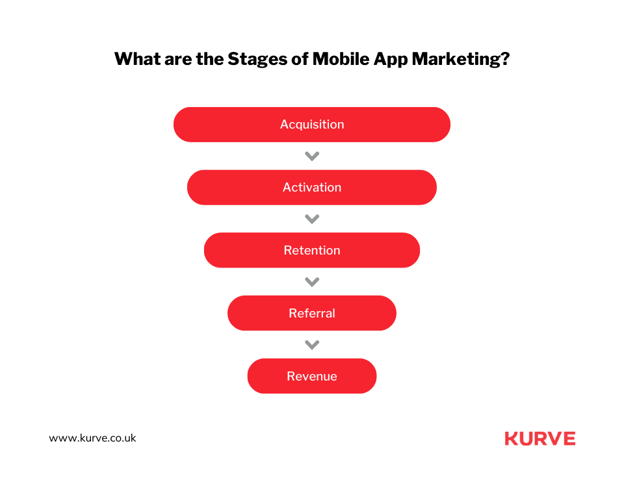
This section will discuss each stage in detail, providing actionable strategies and best practices to help you develop a successful mobile app marketing plan.
Awareness
The initial step in mobile app marketing is the awareness stage. This involves creating awareness about your app and making it visible to potential users.
For instance, social media can help you reach a broader audience and create a buzz about your app by sharing engaging content, promotions, and customer stories. Similarly, influencer marketing can help you leverage social media influencers' reach and credibility to promote your app to their followers.
Another effective strategy is paid advertising, which can help you target potential users with personalized and compelling ads on various platforms, such as Google Ads, Facebook Ads, and Instagram Ads. You can increase the app's visibility and attract a wider audience by utilizing effective awareness strategies.
Engagement
The engagement stage is about creating a positive user experience and encouraging users to explore the app's features.
This can be achieved through personalized messaging, in-app notifications and referral programs.
For instance, customized messaging can help you tailor your communication to each user's preferences and needs, making them feel valued and heard. Similarly, in-app notifications can keep users informed and engaged with your app by providing relevant and timely updates, such as new features, promotions and personalized recommendations. Finally, referral programs can incentivize users to invite friends and family to use your app, increasing your user base and brand awareness.
By focusing on user engagement, you can increase user satisfaction, create a loyal customer base, and encourage users to return to the app.
Acquisition
The acquisition stage involves acquiring new users and increasing the app's user base. For instance, ASO can help you optimize your app's metadata, such as app title, app description and keywords, to improve its visibility and ranking in app stores.
Similarly, SEO can help you optimize your website and landing pages to drive organic traffic and attract potential users to your app. Paid advertising can help you target potential users with personalized and compelling ads on platforms such as Google Ads and Facebook Ads.
You can increase the app's user base by utilizing effective acquisition strategies and creating a foundation for long-term success.
Retention
The retention stage concerns retaining existing users and ensuring they return to the app. This can be done through push notifications, email marketing, and loyalty programs. For instance, push notifications can keep users informed and engaged with your app by providing relevant and timely updates, such as new features, promotions, and personalized recommendations.
Similarly, email marketing can help you communicate with users through newsletters, product updates, and promotions, keeping them engaged with your app. Loyalty programs can incentivize users to keep using your app and earn rewards or discounts for their loyalty.
By focusing on user retention, you can increase user loyalty, improve user experience, and ensure the app's long-term success.
How to Increase App Downloads?
Having covered the four stages of mobile app marketing, let's explore specific strategies and best practices to increase app downloads. In the following section, we'll offer practical advice and effective tactics for each stage of mobile app marketing to help you achieve your download goals.
We'll show you how to create awareness about your app, engage users, acquire new users, and retain existing users. Following these strategies can increase your app downloads and achieve long-term success.
Catch the User's Attention
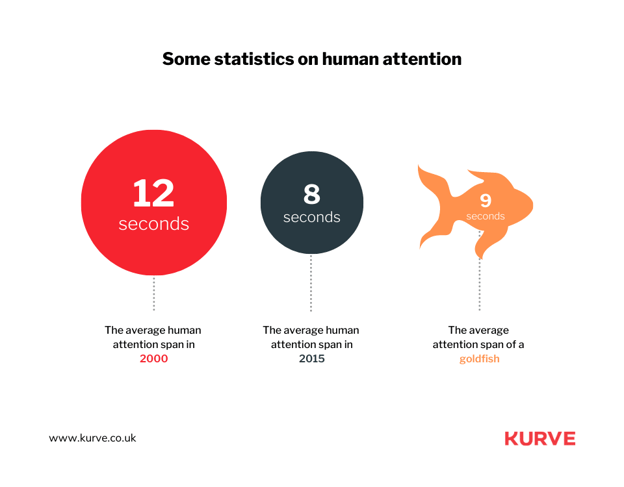
Creating a unique visual identity that catches the user's attention is essential to make your app stand out from competitors. By creating an eye-catching app icon, a catchy app title, enticing screenshots and videos, and a sleek mobile app website, you can make your app more attractive to potential users.
Eye-catching App Icon
When browsing the app store, the first impression of your app is its icon. Designing an app icon that is visually appealing and aligns with your app's purpose is crucial to attracting potential users. A well-crafted app icon can significantly impact increasing downloads and distinguishing your app from competitors. A sound app icon should be simple, memorable, and convey your app's value proposition.
Catchy App Title
A catchy app title is crucial in catching the user's attention and conveying your app's purpose. A good app title should be short, memorable, and easy to spell. It should also include relevant keywords that users might search for in the app store. Avoid using generic or overly complex app titles that might need to be clarified for users or make it easier for them to find your app.
Enticing Screenshots and Videos
Enticing screenshots and videos can give users a better understanding of your app's features and user interface. By showcasing your app's unique selling points and benefits, you can increase the likelihood of users downloading your app. Make sure to highlight your app's most essential features and benefits in the first few screenshots or videos. Use high-quality visuals and avoid cluttering screenshots with too much information.
Sleek Mobile App Website
A sleek mobile app website can help users learn more about your app and download it directly from your website. It should be easy to navigate, visually appealing, and optimized for mobile devices. Include a clear call-to-action (CTA) that directs users to download your app. You can also have customer testimonials, app reviews, and social proof to increase credibility and trust.
Effectively Market Your App
Effectively marketing your app involves promoting it through various channels and strategies to reach your target audience.
This includes social media outreach, influencer marketing, content marketing, and paid advertising. Creating a comprehensive marketing plan and leveraging these strategies can increase your app's visibility and attract more downloads.
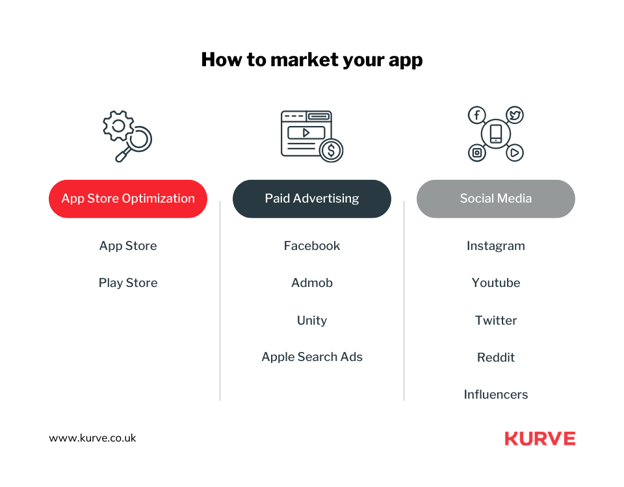
Social Media Outreach
One effective strategy for increasing app downloads is social media outreach. Sweatcoin, for example, used social media outreach to achieve significant success in its marketing campaign.
By partnering with micro-influencers and using platforms like TikTok, Sweatcoin was able to reach millions of potential users and increase its app downloads significantly.
Kurve helped Sweatcoin integrate Google App Campaigns, App Store Optimization, Paid App Store Install Campaigns, and Paid Social on TikTok, Snapchat, and Facebook channels, resulting in a 10x increase in media spending keeping within LTV targets and seeing a 10x growth in monthly user growth via paid campaigns.
Social media outreach is a powerful and cost-effective way to market your app to potential users.
Run ASO Ads
Running App Store Optimization (ASO) ads is another effective way to increase app downloads. Kurve helped Sweatcoin by integrating ASO and Google App Campaigns, allowing them to target ideal users and control the quality of their traffic.
With the placement of ads on the app stores and targeting keywords relevant to their app, Sweatcoin was able to reach potential users searching for health and fitness apps. This strategy and others, such as social media outreach, helped Sweatcoin become the fastest-growing health and fitness app in history.
By partnering with us and implementing a comprehensive marketing plan, Sweatcoin achieved significant success and increased app downloads.
Optimize Google Ads Campaign
Optimizing your Google Ads campaign is crucial to increase app downloads. By segmenting your account by location and keyword, you can target higher-performing locations with lower-cost keywords, allowing you to optimize your budget and bid strategy.
Various resources are available online to learn more about optimizing your Google App Campaigns, including guides and tutorials. Kurve has also created a comprehensive guide on optimizing Google Ads campaigns, covering everything from setting up your campaigns to targeting the right audience and measuring success.
You can access the guide on the link above and other resources to help you improve your mobile app marketing strategies.
Create a Demo Video
Creating a demo video is a great way to give users a visual representation of what your app does and how it works. This video can be used on the app store, website, and social media platforms to help promote your app and increase downloads. The video should be short, concise, and to the point, highlighting the most essential features of your app.
To ensure your video is compelling, focus on the user experience and showcase how your app can solve their problems or improve their lives. You can use animation or screen recordings to demonstrate how the app works. Additionally, adding a voiceover can help guide the user through the video.
Hire Influencers
Influencer marketing can be a powerful tool in increasing app downloads. Finding influencers with a large following in your app's target market can help you reach a wider audience and authentically promote your app. Influencers can create posts or videos showcasing your app and its features or even offer exclusive discounts or promotions to get more app downloads from their followers.
When hiring influencers, ensure they align with your brand values and fit your app's target audience well. Micro-influencers can also be effective, as they may have a smaller following but a more engaged and loyal audience.
Content Marketing
Creating high-quality content can help establish your app as an authority in your industry and attract potential users. This content can include blog posts, infographics, and social media posts. By providing valuable information or entertainment related to your app's niche, you can build trust with potential users and establish a relationship with them.
When creating content for search engines, ensure it's relevant to your app's target audience and provides value to them. You can also use keywords related to your app's niche to improve its visibility in search engine results.
Email Marketing
Email Marketing is a powerful channel to grow your app downloads. It provides a direct communication channel to potential and existing users.
To effectively use email marketing for app promotion, make sure to:
- Build a subscriber list: Collect email addresses from users who have shown interest in or downloaded your app. Offering users incentives such as exclusive content, discounts, or rewards can be a great way to push them toward signing up for your email list.
- Personalize your emails: Address your users by name and use their app activity data to provide personalized recommendations or offers.
- Keep it short and sweet: Users receive many emails daily, so make sure your email is concise and engaging. Use images and a clear call-to-action to encourage users to take action.
- Testing: Optimize different subject lines, content, and sending frequency to optimize your email campaigns for the best results.
SMS Marketing
SMS marketing can also be an effective way to promote your app and increase downloads. It allows you to reach your users directly on their mobile devices and can be particularly effective for time-sensitive offers or promotions.
To use SMS marketing for app promotion, make sure to:
- Get consent: Ensure you have obtained consent from users before sending them SMS messages.
- Keep it concise: SMS messages have a limited character count, so make sure your message is short, clear, and engaging.
- Personalize your messages: Use the user's name and app activity data to provide personalized recommendations or offers.
- Include a clear call-to-action: Encourage users to take action with a clear call-to-action such as "Download now" or "Learn more."
- Optimize for timing: Choose the best time to send your SMS messages based on your user's behavior and preferences.
Engage with your Target Audience
Engaging with your target audience is critical for the success of your mobile app marketing strategy. Engaging with your audience can increase app downloads, retention rates, and user satisfaction. Here are some ways to engage with your target audience.
Setup a Referral System
One effective way to engage with your target audience is to set up a referral system. Referral systems allow current users to invite their friends to download and use the app. In return, users are rewarded with incentives such as free premium features or credits. This creates a win-win situation for both the user and the app, as the user gets a reward and a new user.
Encourage User Reviews
Encouraging users to leave reviews can also help engage with your target audience. Reviews can provide valuable feedback for improving your app, and positive reviews can act as social proof for potential new users. You can encourage users to leave reviews by offering incentives such as exclusive content or early access to new features.
Localize to Multiple Languages
Localizing your app to multiple languages can also help engage with your target audience. By providing language support for different regions, you can make your app more accessible and appealing to a broader audience.
Add Social Features
Adding social features to your app can also help engage your target audience. Social features such as in-app messaging, user profiles, and user-generated content can create a sense of community and encourage users to share and engage with each other within the app. This can lead to increased user retention and higher satisfaction.
Evaluate Your Pricing Strategy
Price can be a critical factor when it comes to mobile app downloads. Evaluating your pricing strategy can attract more users and encourage them to download your app.
Try a Freemium Approach
One popular pricing strategy is the freemium model, in which the app is free to download, but certain features or functionalities require a subscription or in-app purchases. This model allows users to try out the app before committing to a purchase, making downloading more enticing.
Offer Limited Discounted Pricing
Another way to attract users is by offering limited discounted pricing. For example, you could offer a discount during the app's launch or the holiday season. This creates a sense of urgency and encourages users to download the app before the discount period ends. Just communicate the app's value so that users feel the discounted price is worth it.
In-App Tracking
In-app tracking is the process of monitoring user behavior within your app. It involves collecting data about how users interact with your app and then analyzing it to gain insights into user preferences, behavior patterns, and engagement levels. With this information, you can make data-driven decisions about improving your app's user experience, optimizing conversion rates, and increasing customer retention.
You can use tools like Google Analytics, Mixpanel, or Firebase Analytics to implement in-app tracking. These tools provide features like event tracking, user segmentation, and funnel analysis to help you understand user behavior and make informed decisions about improving your app.
App Store Optimization
App Store Optimization (ASO) is optimizing your app store page's metadata to improve its visibility and ranking in the app stores. It involves optimizing various elements of your app's listing, such as the title, description, keywords, screenshots, and video, to make them more appealing to users and increase the likelihood of your app being discovered by potential users.
To optimize your app's metadata, you should conduct thorough keyword research to identify your app's most relevant and high-traffic keywords. You should also optimize your app's title and description to include these keywords in a way that is informative and appealing to users. Additionally, you should use high-quality screenshots and videos that showcase your app's features and benefits.
Mobile App Deep Linking
Mobile app deep linking links to a specific piece of content within your app rather than just linking to the app's homepage. It allows you to provide a more targeted and personalized user experience, as users are taken directly to the content they're interested in rather than navigating through your app to find it.
To implement deep linking, you must create a unique URL for each piece of content within your app. Users who click on this URL will be taken directly to the related content within your app. You can also use deep linking to track user behavior and personalize the app page user experience by dynamically generating links based on user preferences and behavior patterns.
Additionally, you can use deep linking in your app marketing campaigns to drive traffic to specific pieces of content and improve conversion rates.
Final Thoughts
Mobile app marketing is a complex and multifaceted process requiring a strategic approach to succeed. By following the stages of app marketing - awareness, engagement, acquisition and retention - app developers and marketers can create a solid foundation for growth.
App developers can achieve their goals of increased downloads, engagement, and revenue by implementing the steps and strategies in this guide and partnering with an experienced marketing agency like Kurve. For more information on how Kurve can help with mobile app marketing, visit our mobile app marketing page or contact us directly.
